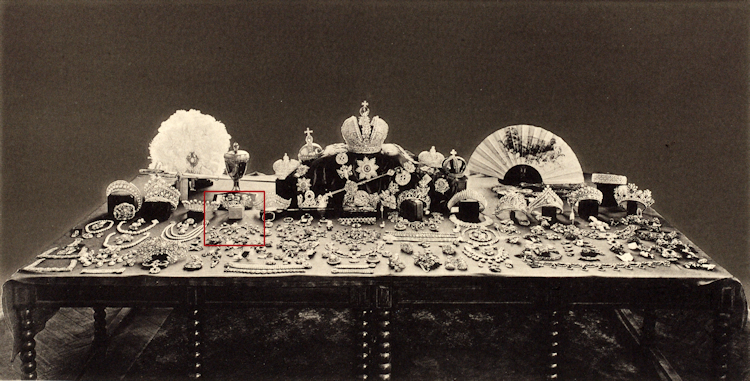 |
| Portrait by Ivan Nikolaevich Kramskoi (June 8, 1837, Ostrogozhsk – April 6, 1887, Saint Petersburg). |
Empress Maria Feodorovna (November 26, 1847, Copenhagen – October 13, 1928, Hvidøre), born Princess Marie Sophie Frederikke Dagmar of Schleswig-Holstein-Sonderburg-Glücksburg. After her father ascended the throne of Denmark as King Christian IX in 1863, she was styled Princess Dagmar of Denmark. In her family, she was mostly known as Minnie and, later, Aunt Minnie.
She was engaged to Tsarevich Nicholas Alexandrovich of Russia in 1864, but he died the following year. In 1866 she married his younger brother, the new heir to the throne who, in 1881, would become Tsar Alexander III. They had a very happy, though relatively short, marriage, Alexander dying at the age of forty-nine in 1894. They had four sons and two daughters; the second son died as an infant and the third, George, died from tuberculosis at the age of twenty-eight. Her eldest son, Tsar Nicholas II, and her youngest, Grand Duke Michael - in whose favor, Nicholas abdicated in 1917 - were both murdered during the Bolshevik revolution.
Maria Feodorovna, though not a great beauty like her sister, Alexandra, Princess of Wales, later Queen Alexandra of Great Britain, was charming and vivacious, and always extremely popular in her adopted country, as grand duchess, empress, and dowager empress; her daughter-in-law, the shy Empress Alexandra Feodorovna, was always compared unfavorably to her. At the time of the revolution she went to live in the Crimea, where many of the Imperial family and other aristocracy gathered. She was finally convinced to leave Russia in 1919, with the last great wave of monarchist exiles. She eventually settled at her estate, Hvidøre, near Copenhagen, where she died at the age of eighty. She was survived by her daughters, Xenia and Olga.
 |
| Obviously the artist, Kramskoi, used this photograph as a model for his portrait. |
***
In the portrait Maria Feodorovna wears court dress of cloth-of-silver trimmed in ermine; I'm guessing that the photograph and painting were made at or near the time of her husband's accession. She wears the star and red sash of the Order of St. Catherine - the right of every grand duchess - soon to be replaced by the pale blue sash of the Order of St. Andrew; the only women allowed this courtesy were the Russian empresses. She wears a diamond "fringe" tiara arranged in the form of the traditional Russian kokoshnik. The large necklace is part of a suite - necklace, tiara, and brooch - apparently made by Cartier. Confiscated at the time of the revolution, their whereabouts is unknown, but they were presumably sold and/or broken up. The brooch is to be seen in the painting, but a different one is worn in the photograph.
 |
| The necklace and matching tiara |
 |
| The brooch that is pictured in the painting |
 |
| A detail from the famous photograph below, showing the tiara and, beneath it, the necklace and brooch. |
 |
| A photograph of much of the "Romanov hoard", post-revolution. This photograph has been invaluable to researchers as so many of these pieces have disappeared and are presumed dismantled. |
 | |||
| The brooch in the photograph looks like it might be this one, which was given to the Grand Duchess Xenia by her parents at the time of her wedding. |




The necklace and tiara were the same piece - convertible from one to the other. There were not two pieces.
ReplyDeleteThat's what a lot of people have presumed. And, certainly, there are very many examples of necklaces that are transformable into tiaras, and vice versa. But if one looks closely, the pearls do not match up at all. Most of those on the tiara are longer and narrower. As further and definite proof, I've added two additional photographs to the post; the detail clearly shows all three pieces.
DeleteAlso, the necklace is directly in front of the tiara on the table
ReplyDelete